Nov
14
2012

A recent post by Jeff Meyers, reproduced in full here with his permission.
I see that the Gospel reading in the lectionary this week is Mark 12: 38-44. I’m preaching through the 10 commandments, so I won’t be commenting on this passage on Sunday. But I would like to give a different perspective on this passage than what is normally heard.
Continue reading
3 comments | tags: Jeff Meyers, Literary Structure, Mark | posted in Biblical Theology, The Last Days
Oct
21
2012
“The Sabbatarian vision is too small. This is why Paul chides the Galatians for observing ‘days and months and seasons and years.’ The Sabbath, along with the Torah administration as a whole, belonged to the stoicheia, the “elements of the world,” the things that constituted the first creation.”
From Tim Gallant’s blog:
Continue reading
Comments Off | tags: Elijah, Galatians, James Jordan, John the Baptist, Matthew, Pharisees, Revelation, Ten Commandments, Tim Gallant | posted in Biblical Theology, Quotes, The Last Days
Oct
18
2012

Part 1 | Part 2 | Part 3
Strange Fire
We’ve reach the central “cycle” of the book of Numbers, the attempt by Balak to destroy Israel. To the unbeliever, it is a story about a talking donkey. For believers, it is a story about a wicked prophet and a carnal people. For those with a wide angle “Bible Matrix” lens, the entire landscape suddenly comes into focus as something familiar and terrifying.
Continue reading
3 comments | tags: Aaron, Balaam, Compromise, Covenant curse, Covenant Theology, Joshua, Literary Structure, Lot, Luke Welch, Moses, Numbers, Numbers 5, Phinehas | posted in Bible Matrix, Biblical Theology, The Last Days
Sep
15
2012
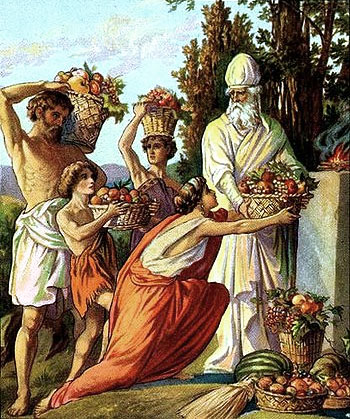
Part 1 | Part 2
Lifting up the Best
Numbers didn’t seem to be long enough for there to be seven “matrix” cycles, but it seems now that this may be a possibility. For the Covenant “five” to “bloom” into a seven, the “Ethics” of the Covenant structure is split into three: Firstfruits, Pentecost and Trumpets, or “Head,” “Fire’” and “Body.” Since Cycle 3 is “Firstfruits,” we should expect the story to include motifs such as Ascension, the Altar-Land, Levitical ministry, the firstborn, tithing and “devotion.” Hey, guess what comes next in Numbers?
Continue reading
1 comment | tags: Aaron, Firstfruits, Moses, Numbers | posted in Bible Matrix, Biblical Theology, The Last Days
Sep
12
2012

or Mr White and the Black Hat
“There is a way that seems right to a man,
but its end is the way to death.” (Proverbs 14:12)
King David committed far worse sins than did King Saul. Saul was not an evil man, yet his judgments caused the deaths of many people, including Jonathan, his other sons and even the priests of God. Why did a reign that began so well end in such tragedy?
Continue reading
Comments Off | tags: Acts, AD70, Amalek, David, Edomites, Herod, Pentecost, Proverbs, Samuel, Saul | posted in Biblical Theology, Christian Life, Ethics, The Last Days
Sep
11
2012
The Holy Herringbone
 Part 1 here.
Part 1 here.
We’ve covered the first “Covenant cycle” in Numbers, which in theory should set the pattern (fractally) for the remainder of the book. Here’s my go at the second cycle, which (again, in theory, if my suspicions are correct), should be an “exposition” of the second part of the first cycle, which concerned the “military” arrangement of the tribes around the Tent of Meeting (Delegation). So, even though this cycle works through all seven steps, each step should reflect an “Exodus/Hierarchy” or Delegation theme. Each step thus has two literary “spatial coordinates,” an X and a Y. Each step must thus employ a symbol that pertains to two different Covenant steps, or describes the relationship between them.
Continue reading
1 comment | tags: Aaron, Covenant Theology, Fractals, Literary Structure, Miriam, Moses, Numbers, Systematic typology | posted in Bible Matrix, Biblical Theology, The Last Days
Sep
8
2012
or The Architecture of Abraham’s Bosom
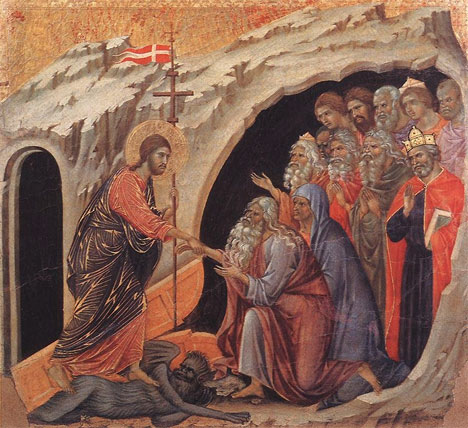
“For just as Jonah was three days and three nights in the belly of the great fish, so will the Son of [Adam] be three days and three nights in the heart of the [Land].”
(Matthew 12:40)
There was some to and fro recently between Doug Wilson and Andrew Perriman on the use of Greek terms for the grave and hell used by the New Testament writers. [1] Each makes some very good points (I lean more towards Perriman), concerning “what lies beneath.” When Jesus speaks of a “divided hell,” should we be overly concerned about Greek mythology? It seems to me that those who focus on the references to pagan literature in the Bible fail to see the biblical sources of many things, even if these biblical things pick up Greek names along the way.
However, neither Wilson nor Perriman really deals with the architecture of God’s work in the world, which is what actually lies beneath. As with Shakespeare, an understanding of God’s “global theatre” enlightens us concerning the shape of His stories.
Continue reading
Comments Off | tags: Abraham, AD70, Baptism, Circumcision, Covenant Theology, Genesis, Melchizedek, Moses, Revelation, Solomon, Temple | posted in Bible Matrix, Biblical Theology, Creation, The Last Days
Aug
30
2012
Theandric Plenipotentiary Iteration
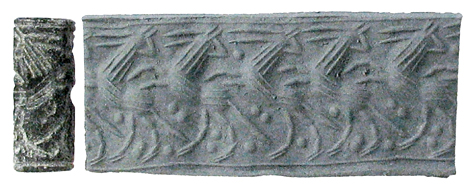 “It takes on form like clay under a seal…” (Job 38:14)
“It takes on form like clay under a seal…” (Job 38:14)
Read The Secret before you read this post.
Typology is the science of recognizing the shape of one thing stamped upon, into, something else. In itself, this is not an exact science by any means, and is prone to abuse. Thankfully, the Bible doesn’t simply give us isolated “indentations”; it gives them to us in sequences. Sequences of ideas, like sequences of musical notes, are exact, even if our identification of them is not yet as refined as we would like.
[This post has been refined and included in Sweet Counsel: Essays to Brighten the Eyes.]
Continue reading
Comments Off | tags: Chiasm, Feasts, Genesis, Literary Structure, Mark Horne, Revelation | posted in Bible Matrix, Biblical Theology, Creation, The Last Days
Aug
22
2012
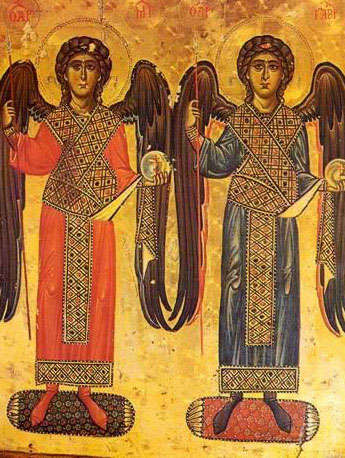
And every pot in Jerusalem and Judah shall be holy to the Lord of hosts, so that all who sacrifice may come and take of them and boil the meat of the sacrifice in them. (Zechariah 14:21)
Working on a post about the use of seals in Revelation, I was looking through the uses of the word “seal” throughout the Bible. Daniel 9:24, a very famous verse, showed up, and its structure struck me as worth some analysis. If structure is indeed part of the means of the Author’s communication, it is not an optional extra.
Continue reading
Comments Off | tags: AD70, Covenant curse, Covenant Theology, Daniel, Feasts, James Jordan, Levites, Leviticus, Literary Structure, Peter Leithart | posted in Bible Matrix, Biblical Theology, The Last Days, The Restoration Era
Aug
16
2012
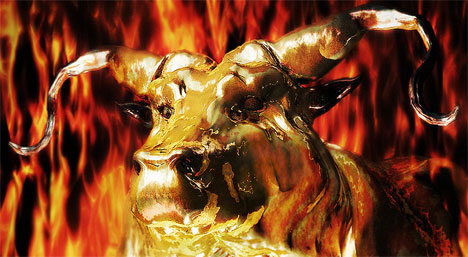
“Now therefore fear the Lord (T)
and serve him in sincerity and in faithfulness. (H)
Put away the gods that your fathers served (E)
beyond the River and in Egypt, (O)
and serve the Lord.” (S)
Joshua 24:14
40 Years of Harlotry
Israel famously wandered in the wilderness for forty years. They were tested, offered as a sacrifice and refined with the holy fire of the Law of Moses. This “threshing” process appears at the centre of the Bible Matrix. It is pictured as the time of harvest (Pentecost – the giving of the Law), and as the burning eyes of the Lampstand watching over Israel (sun, moon and five visible planets). In the Covenant pattern it is the “Ethics,” the bit where God lays out the rules for success. Threshing is also a biblical euphemism for sexual relations. At this point, under the Lawful eyes of God, Israel is either shown to be a faithful bride or an adulteress. Is the fire of her desire true or “strange” (foreign). We can see this pattern in James 1:15. It is a sick parody of the Covenant process because it begins with a “false word.”
[This post has been refined and included in Sweet Counsel: Essays to Brighten the Eyes.]
Continue reading
Comments Off | tags: Aaron, Communion, Covenant curse, Covenant Theology, Exodus, James Jordan, John the Baptist, Joshua, Malachi, Moses, Numbers, Numbers 5, Rene Girard | posted in Apologetics, Bible Matrix, Biblical Theology, Christian Life, The Last Days


































